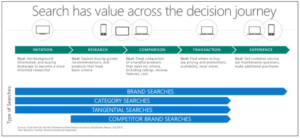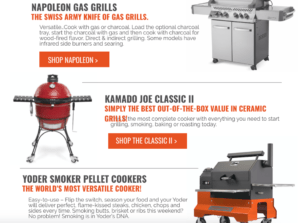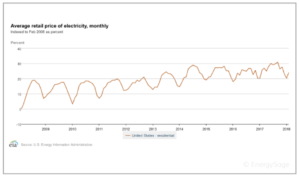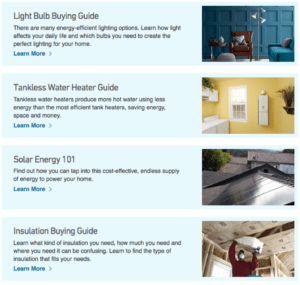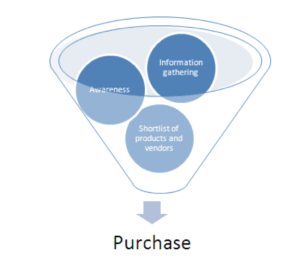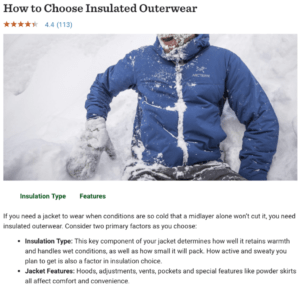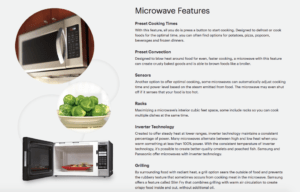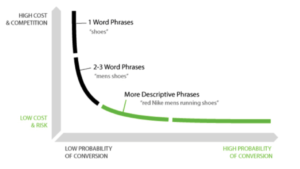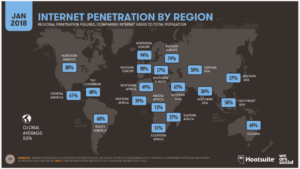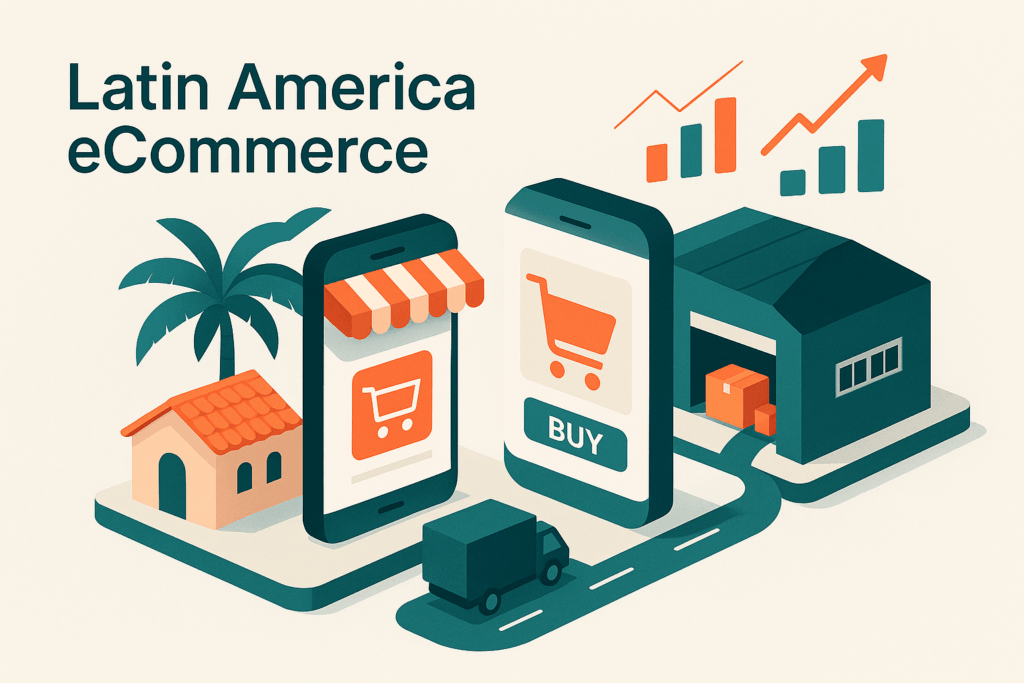As an eCommerce brand, you have the ability to sell products to people all over the world. The Internet has made it possible for you to operate.
But this means that you’re no longer competing with just a few other local businesses in a small town. You’re competing against other eCommerce shops as well as the retail giants like Amazon, Walmart, Target, and Wayfair.
With so much competition, you need to find a competitive edge today more than ever before.
The first thing you need to do is recognize the buying behavior of consumers. Since they are presented with so many options for the same or similar products, how do they decide where to buy?
According to a recent study, 71% of consumers use search engines to discover new products.
74% of consumers use search engines during the consideration and purchasing stages of the conversion funnel as well.
I know that the majority of you are running social media campaigns to drive traffic to your website, which is definitely something you should continue doing. But as you can see from the figures above, search engines heavily outrank social searches.
That’s why your eCommerce company needs to prioritize search engine optimization.
It’s all about getting ranked as high as possible. The higher your ranking, the greater the chances are that you’ll get more clicks.
75% of clicks happen on the first page of search engine results. 33% of clicks go to the first position, and about 15% go to the second result.
Basically, if you’re not ranked on the first page, you’re going to struggle to compete with other brands that are getting all of the traffic.
That’s why you need to start using product buying guides to improve your SEO strategy.
I’ll show you how you can use product buying guides to increase your search ranking, traffic, and ultimately drive more conversions. Here’s what you need to know.
Finding Your Niche
Depending on the type of brand you have and the industry that you’re in, you could be selling anywhere from a dozen products to thousands of items on your eCommerce platform.
So when you’re writing product buying guides, you need to make sure that you find your niche.
The fact of the matter is this. Niche products, guides, websites, and content will always beat ones that are more generic.
In order to become an authority brand within a niche industry, you can use eCommerce product guides to your advantage.
First, you need to identify your target market. There shouldn’t be any ambiguity here. Get down to the specifics.
For example, saying that you’re targeting male consumers isn’t enough. The more accurate you can be with defining your target audience, the easier it will be for you to find your niche.
Let’s say you sell activewear clothing. Here’s an example target market:
- Males
- Ages 24-35
- Located in the United States
- $55,000 – $80,000 annual income
- Has a gym membership
- Works out at least twice per week
Now that you know who you’re targeting, it’s going to be much easier for you to position your product buying guides to reach those individuals.
You need to have a firm grasp of the buyer’s journey.
Before people can convert and experience your products, they’re going to conduct research and do some comparing.
They’re going to compare products, brands, and prices. So why not make this easier for them and let them conduct this research directly on your website?
That’s where your product buying guide comes into play.
There’s a reason why these guides can really push your rankings higher and improve your SEO strategy.
For starters, each time you publish a new buying guide you’re adding fresh content to your website, which is known to help with SEO. They are typically longer forms of content, meaning you’ll have more characters and words on your website.
Buying guides are recognizably original as well. You’ll have the opportunity to pack these guides full of relevant keywords related to your niche and improve your link-building strategy.
All of these elements will hit the mark on your checklist of SEO content needs.
Here’s a great example of a niche product buying guide from All Things Barbecue.
As the name implies, All Things Barbecue is obviously already in a niche category of their own.
However, they take this buying guide one step further by positioning it as gift ideas for Father’s day. The section above that I highlighted goes even deeper into that niche with a product buying guide for grills.
Do you want to use gas, charcoal, ceramic, or pellet? What type of meat will be cooked? Which option delivers the best value?
All of these questions are answered in the buying guide.
As we continue through this article, I’ll show you some more great examples of product buying guides that you can use as a reference.
Content Creation
Now that you’ve recognized the importance of having product buying guides on your website, it’s time to write them. So fire up your computer and start writing, right?
Not so fast.
Your product buying guides won’t be effective if they’re not written properly. So make sure you find someone with writing talent to complete these tasks for you. If your guides are full of spelling mistakes, grammar issues, and aren’t formatted properly, they will do you more harm than good.
In addition to finding someone with exceptional writing skills, the person who creates this content also needs to be familiar with your industry and Google.
They need to be educated on what they’re writing about. Plus, the guides need to be written in a way that appeals to search engines.
Your buying guides don’t need to be so black and white. Come up with creative ways to make this content appeal to your niche.
Focus on trends or recent news topics as inspiration for your buying guides.
Let’s take a look at another example. Research shows that the residential electricity rates have increased by about 24% over the last ten years.
This isn’t necessarily groundbreaking information, but it’s a trend that’s worth noting if your eCommerce brand is in certain industries.
With energy costs on the rise, consumers are more conscious and price-sensitive when it comes to buying products that can impact their utility bills.
That’s why Lowe’s has product buying guides for home energy efficiency.
In order to properly create these guides, the writer must be knowledgeable about the products.
They also need to be able to convey this information to the consumers in a way that’s easy to comprehend, while still focusing on SEO.
Checklists and bullet points work great for this.
Avoid huge blocks of text. You want your guides to be easy to scan. Why is this so important?
Well, according to Forbes, only 16% of people read online content word-for-word. 79% of people just scan through it.
Your tone is another major component of writing these buying guides.
It’s important to make sure that you’re unbiased, even though you obviously are. You want your customers to buy something from your website as opposed to your competitors, so you need to be sure that the guides make it as easy as possible for them to do that.
For example, let’s say your eCommerce shop sells office supplies. You’re creating a buying guide on office chairs.
Part of this guide includes a section on the best chairs for lumbar support. You include a list of what to look for when buying this type of chair.
Now make sure you have a link to a product that fits the description of what you just explained.
You don’t want to sound too pushy or salsey, but you need your content to be actionable so that the guides will ultimately drive conversions.
What to Include in Your Product Buying Guides
When you’re writing these product guides, you need to put the consumer into a funnel as they are making a decision to buy a product.
If you keep this funnel in mind, it will make it much easier for you to drive them to make a purchase.
Now that you understand how your content should be written and who should be writing it, you have to learn how to format these buying guides so that they’re actionable and SEO-friendly.
I’ll tell you what elements should be included in your buying guides. It’s worth mentioning that not all of these are a requirement, but they are definitely recommended.
Who the Guide is for
Your product guide should start with a brief introduction that shows who the guide is written for.
The purpose of this is to make the reader feel like they’ve come to the right place. They’ll know right away that the guide they’re about to read is going to fit their needs.
Without this introduction, you run the risk of visitors leaving your page without consuming the content.
Here’s an example of how REI used this strategy on their buying guide for insulated outerwear.
As you can see, the opening lines of this buying guide cut right to the point. If the consumer is preparing for cold weather conditions, they have come to the right place to find outerwear.
To make sure your guide is optimized for searches and gets lots of traffic, you should also consider including a meta description as well that explains who the guide is for.
This is the text that appears below your link of the search results. Check out the meta description for the example above.
Now consumers have a preview of what your guide will entail before they click on the link.
This is your chance to show people why your website stands apart from the other search results on the page.
Budget Options
Your buying guide should touch on different price points.
That’s because 80% of consumers compare prices before buying something online.
You can discuss what features change as prices increase.
For example, let’s say your eCommerce shop sells mattresses. The prices of this type of product range from anywhere from a few hundred dollars to upward of $10,000.
You can have a section of your buying guide that explains the differences in these prices.
What’s the price difference between a full size and a king size? At what price point can you buy a mattress with an adjustable remote option?
These are all things that would be included in this section.
This will really help you in terms of your SEO strategy as well. You’ve got to think about the way people search for things on Google.
If someone runs a search for “best mattress under $1,000” and your buying guide has a section with this header, it increases the chances that you’ll be a top search result.
Niche Products
We talked about niche earlier, and I’ve mentioned this concept a few times since. But I want to break this concept down even further.
As I just explained with the mattress example, if you can create headings within your buying guide that appeal to certain niches, it will improve your buying guide. This goes far beyond just highlighting different price points.
For example, let’s say your eCommerce store is in the outdoors niche. You target customers who like camping, fishing, hiking, kayaking, and other similar activities.
If you’re writing a product buying guide for something like hiking boots, you can segment your headers by categories within that niche.
- Best hiking boots for cold weather
- Best hiking shoes for mountains
- Best waterproof hiking boots
These are all examples of categories that could be included in your buying guide.
By including as many segmentations as possible, your guide will appeal to a wider audience and increase the chances that more consumers will find what they’re looking for on your website.
Key Considerations to Look For
Your product buying guides need to educate consumers. You need to tell them what to look for when shopping for specific products.
Let’s say you sell electronics through your eCommerce platform. You could have a buying guide about wifi extenders.
Some key considerations to look for would be:
- Size of home
- Ease of setup
- Signal speed
- Compatibility with existing equipment
- Streaming needs
These are all factors that the consumer might not keep in mind when they’re shopping unless you remind them to.
Here’s a great example of this on a microwave buying guide from Best Buy.
As you can see, they cover a wide range of features that the consumer should be looking for when buying their microwave.
Photos
Your buying guide needs to have images.
It’s one thing to tell people something, but showing them makes it that much better.
Research shows that 75% of consumers say that visual content inspires them to make purchases.
Internal Linking
Your buying guide needs to include relevant internal links. This is another important component of your SEO strategy.
Add internal links that bring readers to a specific product that fits the description of what you’re writing about in your guide.
You can include links to relevant blog posts as well.
SEO
We’ve been talking about SEO and its importance throughout this article. But I wanted to just briefly dive a little bit deeper into the topic.
If you refer back to everything I just said for what should be included in your product buying guide, all of these elements will help with your SEO strategy.
These guides should offer premium content with premium suggestions.
In addition to adding fresh content to your website, product buying guides give you a chance to add lots of keywords, especially long-tail keywords.
Generic keywords are too competitive. You will have a tough time getting a high ranking if you’re just using generic search terms.
If you’re paying for keywords with PPC campaigns, the cost for broad and competitive words will be significantly higher as well.
Even if you manage to get a high ranking, the traffic won’t be targeted the same way as it would for long-tail keywords.
When someone searches for terms that are more specific, it increases your chances of getting them to click and convert.
That’s why these guides are so great for SEO and Google.
Conversions
As I just said, the SEO components of product buying guides will help you get more conversions.
Again, keep the customer conversion funnel in mind. You need to funnel the user to where they need to go to complete a transaction after reading your guide.
Here are some of the best ways to help you drive conversions.
Reviews
90% of consumers read reviews online before buying something.
84% of people say they trust an online review as much as a personal recommendation from a friend or family member.
Knowing this information, you shouldn’t make your website visitors navigate to another page or website just to read product reviews. Include these in your buying guide as well so they can get everything from one place.
As a result, it will help you drive conversions.
Statistics and References
Some products and industries will have statistics associated with them. You should include these in the buying guides to educate your readers.
Think back to some of the examples that we looked at so far.
If you’re writing a buying guide about a product that will help you save energy in your home, including some energy statistics to back up your claims.
A buying guide about mattresses may include information about what percent of the population doesn’t sleep well at night or something along those lines.
Whenever you include statistics, you need to provide accurate references to legitimate sources.
This will increase your credibility and boost your chances of getting people to convert.
Market Trends and eCommerce Data
You need to have a strategy before you start creating product buying guides.
Just because you sell certain products on your eCommerce platform, it doesn’t automatically mean that you should write a buying guide about them right away.
You need to analyze your eCommerce data and review the latest market trends.
Find out what people are buying and searching for based on this information. Then prioritize those guides accordingly.
Ultimately, this will help enhance the usability of the products that you’re writing about and lead to conversions.
A Global Perspective
With an eCommerce business, you can reach anyone in the world who has Internet access.
But with that said, based on the size of your business and other factors, you may not necessarily be targeting, shipping, or selling to everyone in the world.
Take a look at this graphic above. Based on these numbers, you should be targeting regions with the highest percentage of Internet penetration by population.
There is a direct correlation between these figures and the consumer spending power.
In 2018, you’ll want to create buying guides mainly for consumers in the US, Canada, and Europe.
But the needs of a consumer in the United States may vary from the needs of a consumer in Europe, so you just need to plan accordingly and make sure that you are appealing to the right audience.
Conclusion
One of the best ways to improve your eCommerce SEO strategy is with product buying guides.
Creating these guides will help you increase your search rankings and drive more traffic to your website. Buying guides are definitely one of the top tools that will enhance your eCommerce business in 2018.
Increased traffic will improve your chances of getting more conversions. Furthermore, the guides themselves can be written in a way that entices people to buy what you’re selling.
For those of you who have never written a product buying guide or need help improving your existing guides, use this article as a reference to steer you in the right direction.
Do you need any further assistance with researching, formatting, and creating a product buying guide? Please let us know, and we’ll be happy to help you out.





